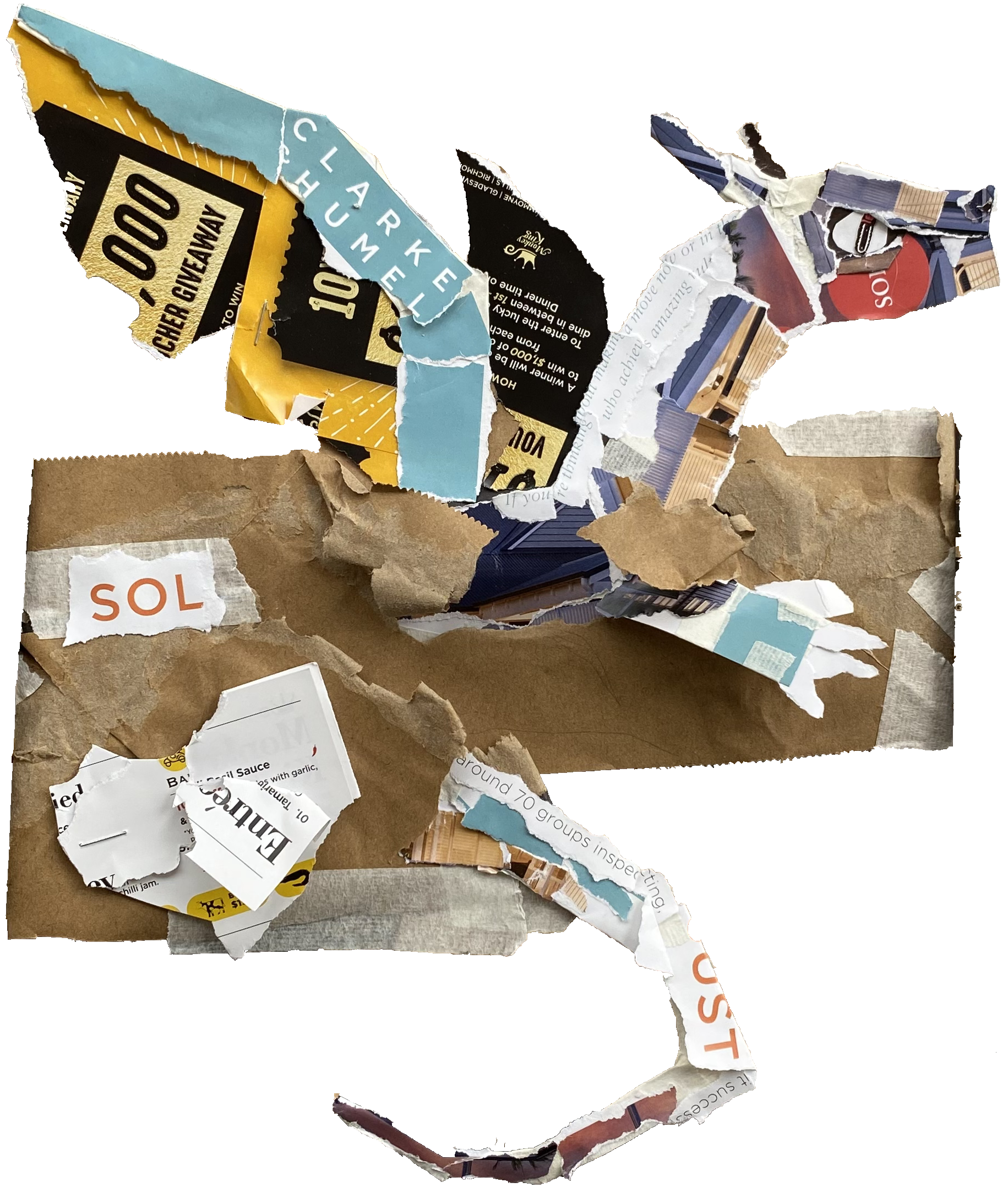
The motif of the dragon was selected as it is a symbol that represents my experiences as an autistic person in many ways. The dragon is symbol that has been, throughout history, at once feared and cherished. Dragons have been depicted throughout different cultures as either a great scourge on the land or as wise and gifted helpers to humans. However, in the modern age dragons are primarily seen as little more than another whimsy of fantasy media. The many conflicting myths and legends have combined into a singular concept, which has become infantilised due to its associations with the fantasy genre and related prevalence in children’s media. In this same way, autism- and by extension, autistic individuals- have been feared, mythologised, oversimplified, and ultimately infantilised. These occurrences are, of course, common to most any disability, and thus what makes the metaphor of the dragon deeply related to autism specifically is my own experience- the topic of dragons is one of my longest held and most deeply valued special interests.
Gathering information and resources, organising, and aesthetically shaping and arranging media- all processes integral to both collage and coding- are things that come easily to me, certainly in no small part due to my autism. Thus, my process of creating with these mediums is deeply engaged with this context. While collage is a creative media with a longstanding artistic history, the practice of coding- here, more specifically web development and design- is an evidently far more contemporary medium. Besides my affinity for the uniquely adaptive problem solving mindset any software developer must adopt, I was largely influenced to create a website to host this digital installation by the ‘take back the web’ initiative.
This online movement has formed in response to an increasingly restrictive environment of social media and idolises a nostalgia for the early before the rise of facebook and other such social media sites. The initiative values digital presences and activities that are largely seen as outdated or too inconvenient to use, such as online forums, email, zines and personal websites coded by their user- however gaudish or amateur the result may be. A large proponent of this movement is Neocities, a modern revival of the former website-hosting platform Geocites, which featured countless personal websites, each brimming with the personality and creativity of its creator. While the take back the web initiative is still relatively small and little known, many of its criticisms of modern social media are beginning to become commonplace. Such critiques include the overabundance of advertisements on all media platforms, the current concerningly profit-driven development of AI, as well as various anti-crypto and nft, anti-racist, feminist and queer inclusive sentiments. The very premise of the movement is to create a less moderated and more varied experience of the web, and so the take back the web initiative is by its nature disorganised and has many conflicting parties and ideas, however all relevant voices in the conversation converge on the singular concept that the internet today has become restrictingly corporatised and oversimplified. Much comparable to the recent rise in popularity of records, many people are tired of the total automation of media consumption that current social media prioritises. An increasing number of people are beginning to welcome inconvenience back into their lives through the rolling back the use of established technologies in favour of their less developed but more truly socially engaged predecessors.
Thusly, this project is aligned with the take back the web movement, raising questions of ownership of information through its presentation of its own source code as a vital part of the website’s structure itself. Of course, this is not a means of revealing something that was previously hidden, as all web pages can be viewed in this way using tools conveniently integrated into any browser you would reasonably be using to read this- this inspection includes this page, a fact which I hope breaks the illusion of this website’s auto-biopsy. Instead, the aim of this layout is to make plain what to the average viewer is obscured, and to highlight to the initiated web developer my personal (and highly inexperienced) approach to web design.